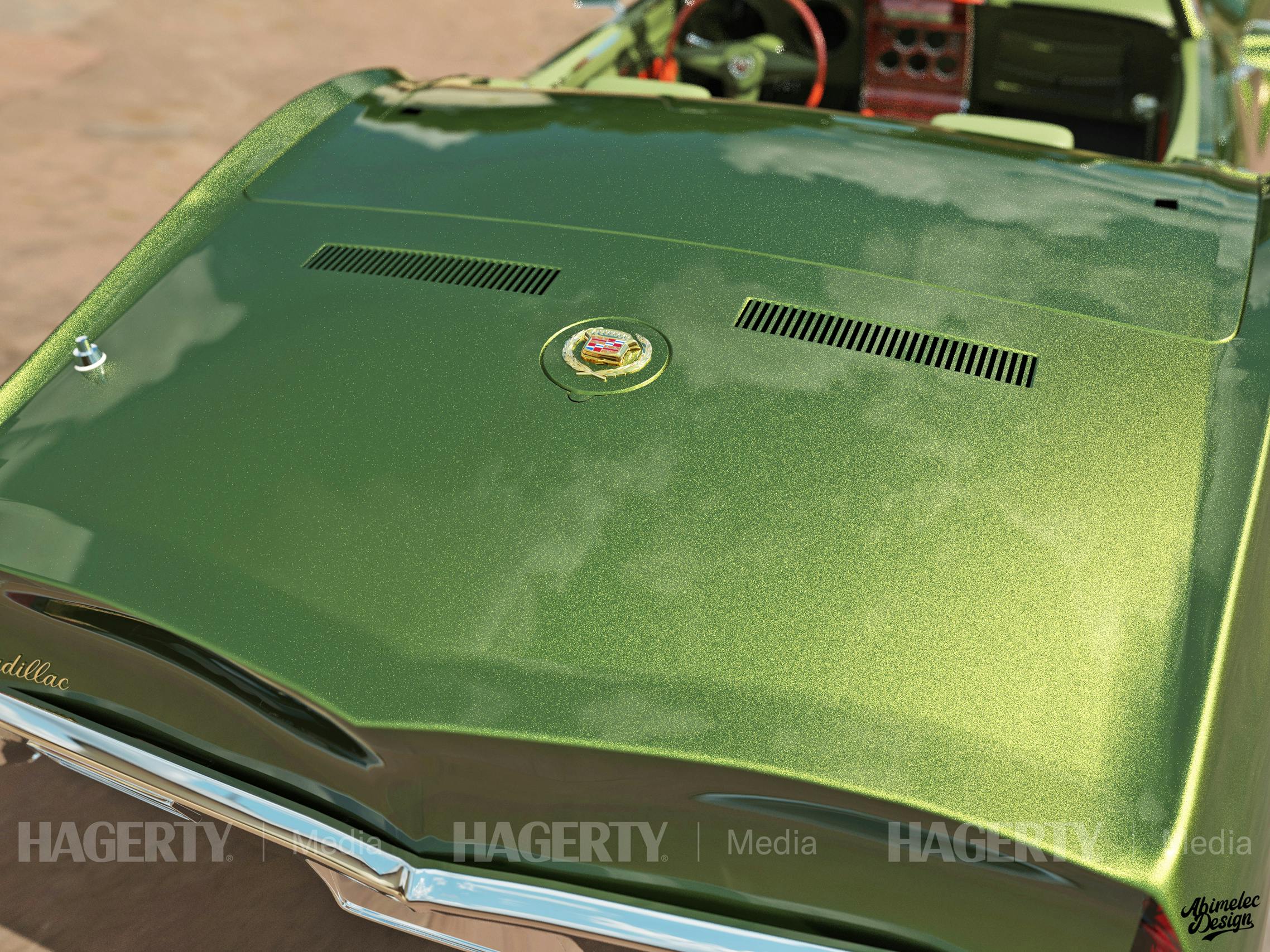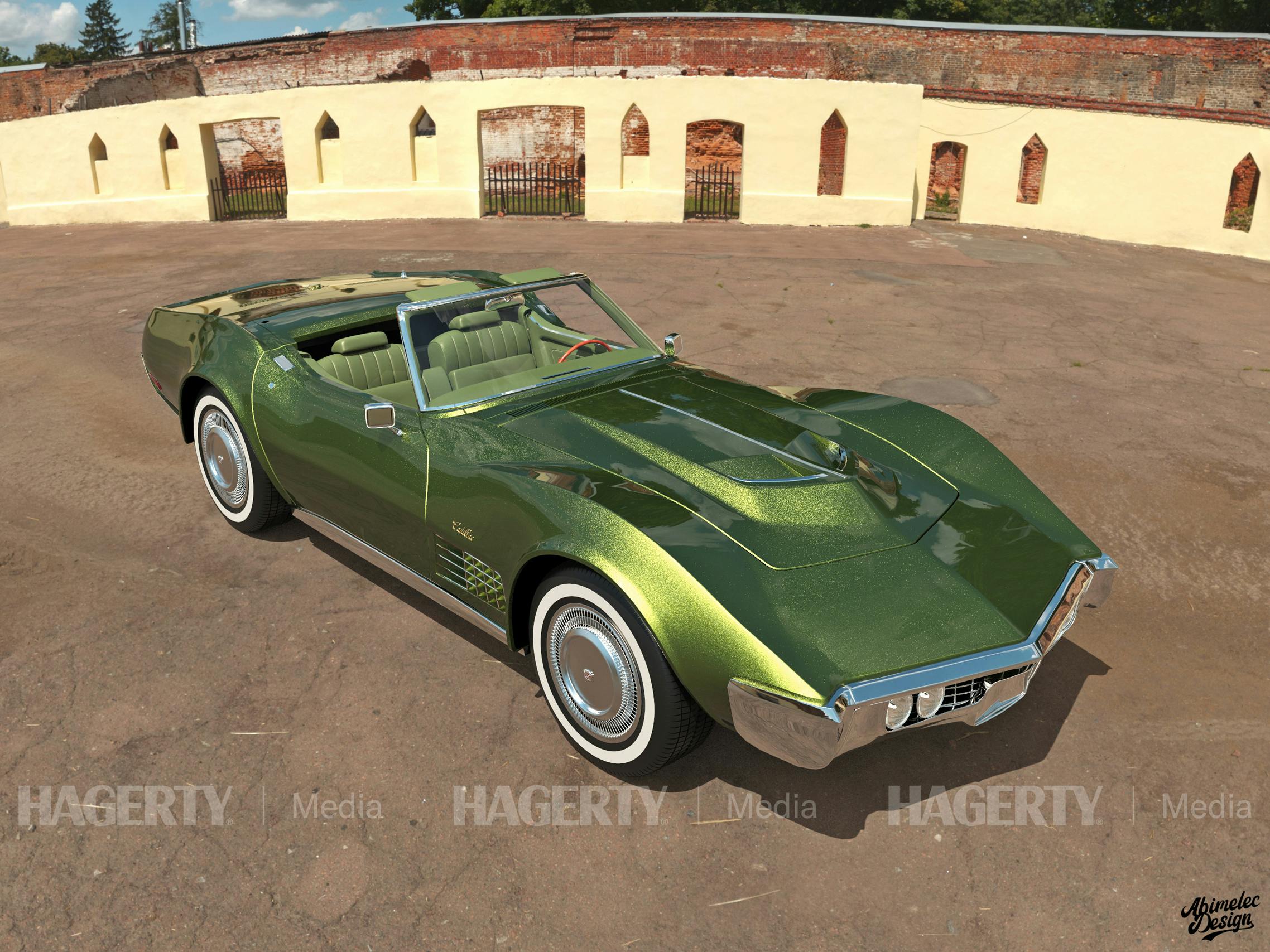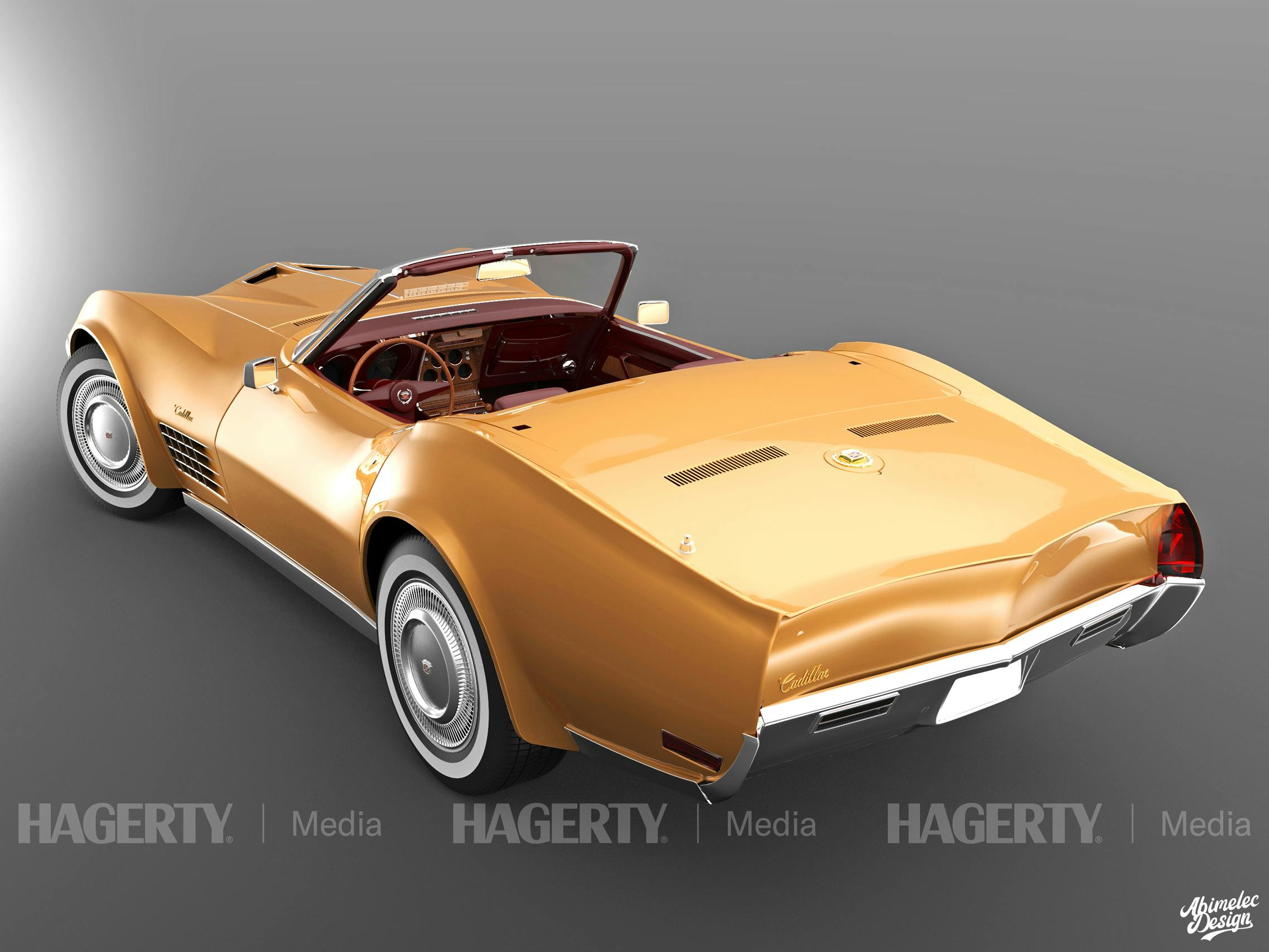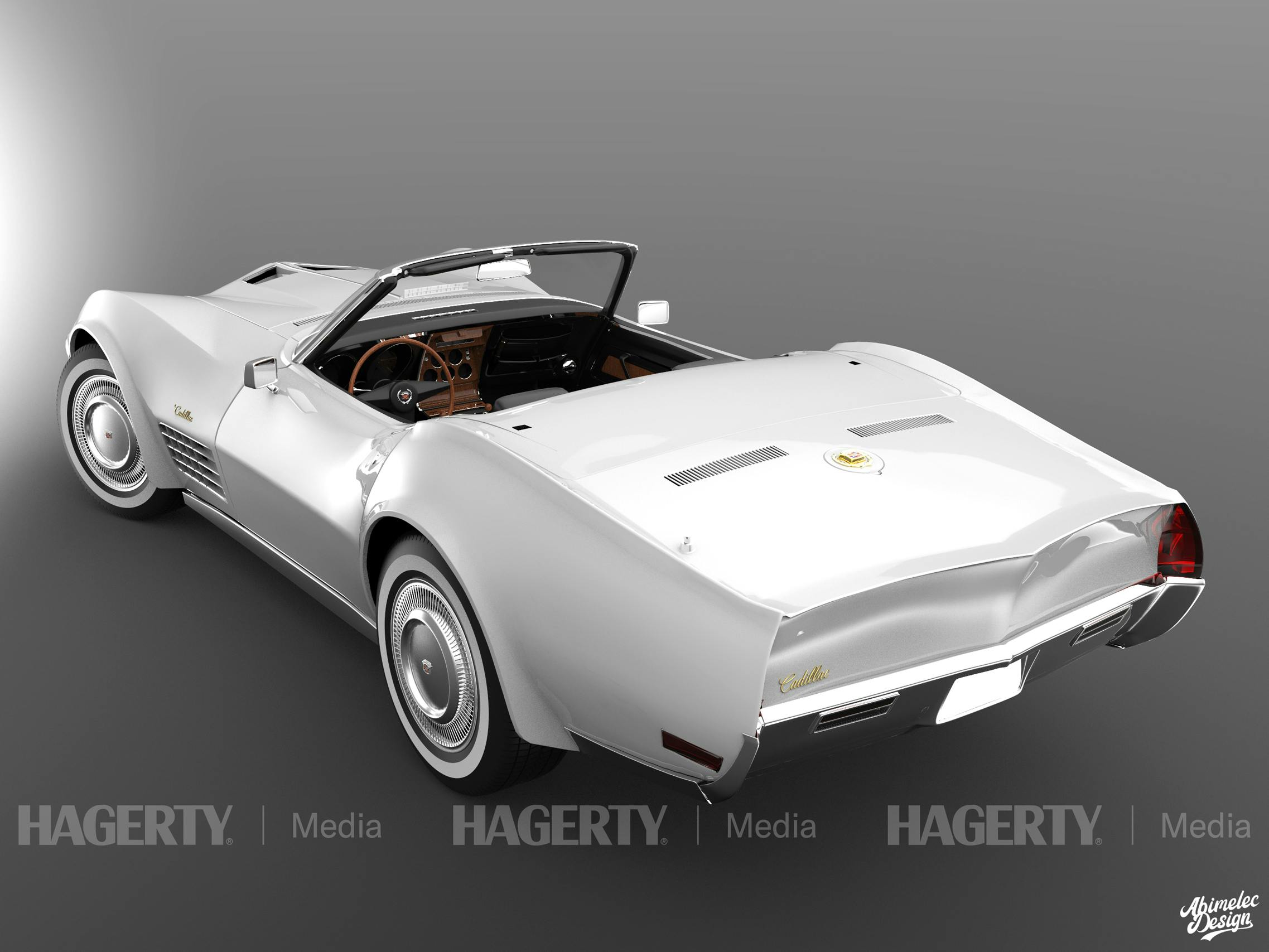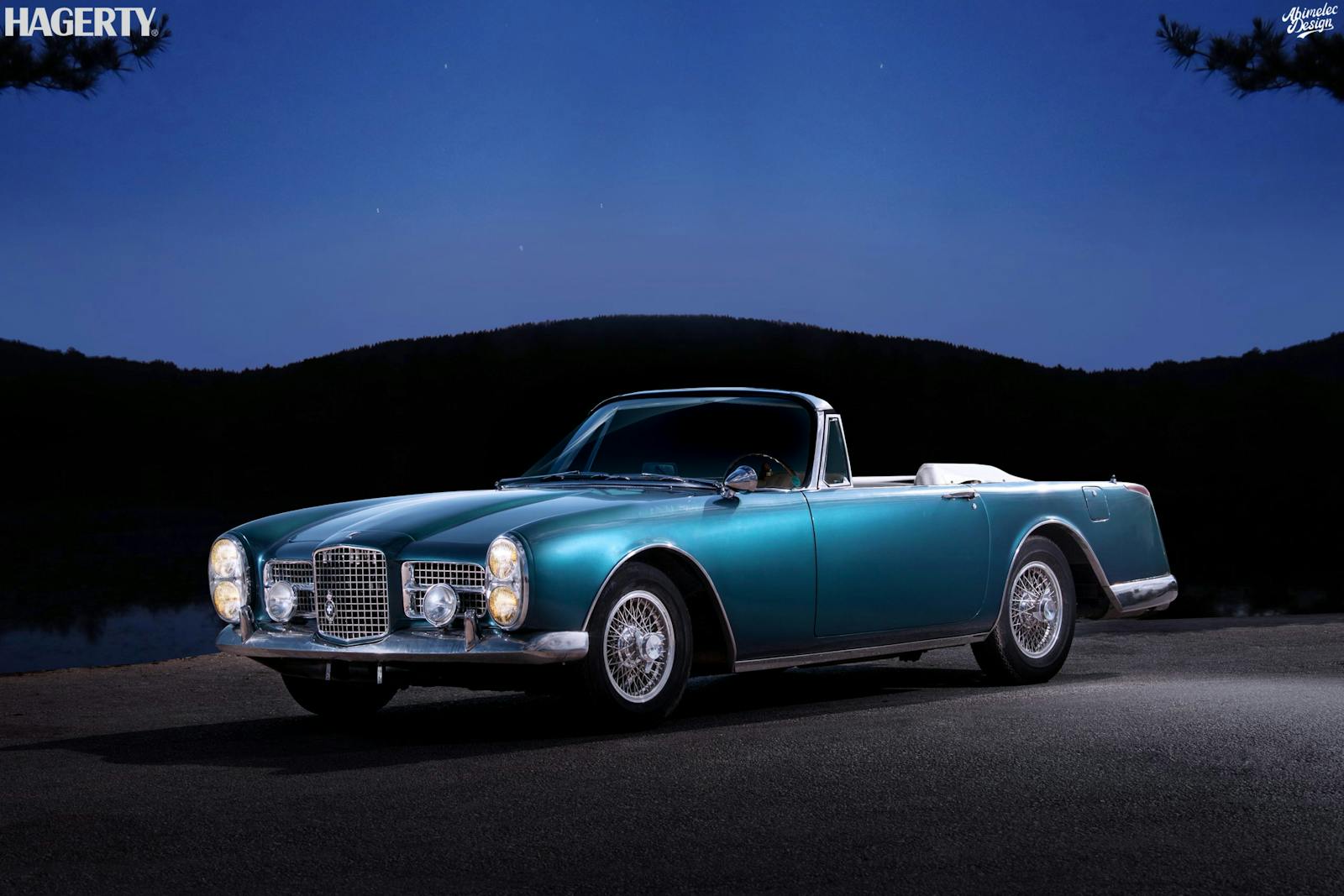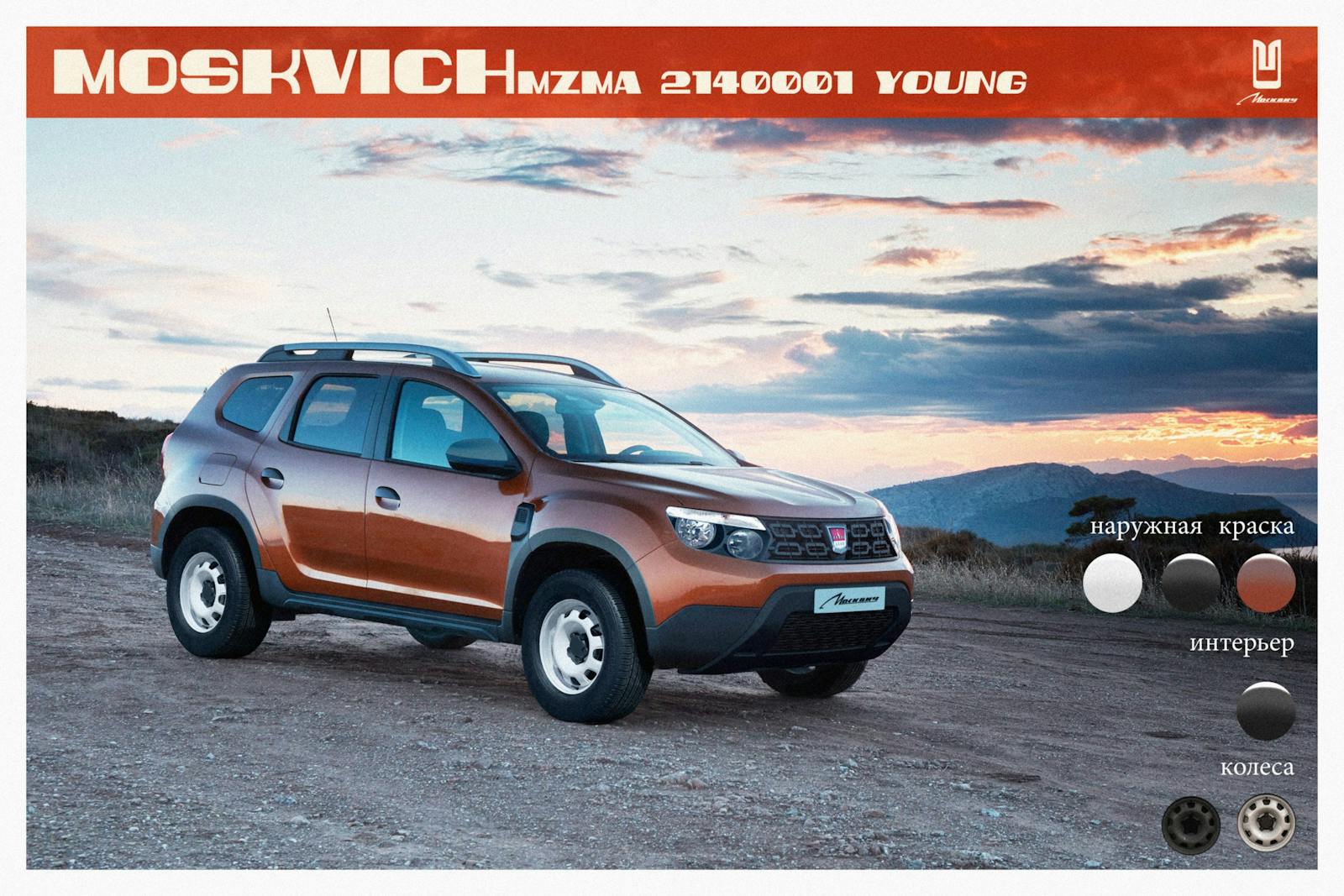What If? 1970 Cadillac Roadster de Ville
Welcome to What If, a new feature from imaginative illustrator Abimelec Arellano and Hagerty. We’ll be taking you back in time—and possibly forward into the future—to meet alternative-universe automobiles. Even better, our time machine is working well enough to bring “short take” reviews along with the photographs and advertisements. Buckle up and enjoy the ride! — Jack Baruth
(Originally published in Backroad & Racetrack, October 1969 issue)
It’s a question that has been on everyone’s mind since at least 1963: Why is the Corvette a Chevrolet and not a Cadillac? As part of the “low-priced three.” Chevrolet has always been an unlikely home for a car that, even without a single option, costs more than twice as much as a new Nova and just six hundred dollars less than a new Cadillac Coupe de Ville.
Last month we tested the new 454-powered Corvette, which was the first Corvette we’ve tested in years with a top speed over 130mph despite being fitted with a three-speed Turbo-Hydra-Matic automatic transmission. Credit the long legs to a tall final drive ratio that took some of the bite out of the 0–60 figures but did nothing to slake the 3740-pound roadster’s nine-mile-per-gallon thirst. Our impression of the car was that it was more luxury cruiser than SCCA bruiser, and perhaps the most Cadillac-like Corvette to date.
Little did we know that General Motors was preparing to take us literally. This new 1970 Roadster de Ville was developed concurrently with the 1968 Corvette Sting Ray but delayed due to concerns about achieving “The Standard Of The World” quality in the undersized St. Louis, MO assembly plant that assembles both the Corvette and the “RdV.” These concerns have been allayed to everyone’s satisfaction, although we did notice some misaligned trim pieces in our early-production test car.
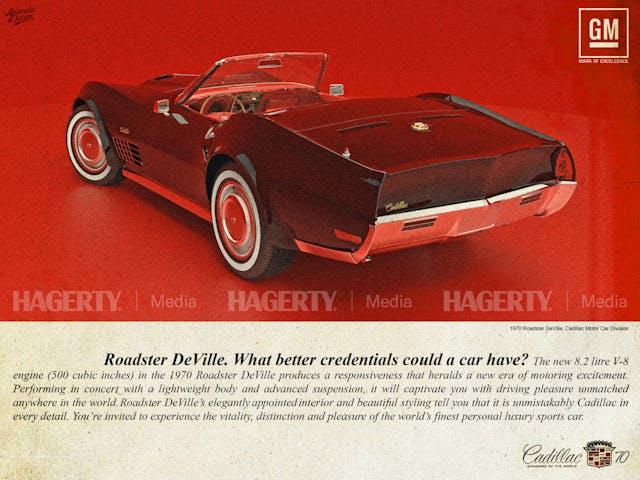
Like its Chevrolet sister, the Roadster de Ville features a strikingly-styled fiberglass body on a steel frame. The two cars are mechanically identical except for the engine, which in the Cadillac is the new 500-cubic-inch (8.2 litre) V-8 that will also see duty in the Eldorado personal-luxury coupe. Both cars use the same Turbo-Hydra-Matic three-speed; there is no four-on-the-floor option for the Roadster de Ville. Nor will there be a hardtop version, at least for right now. It is expected that the Federal Government will pass a law banning full convertibles by 1973, at which point perhaps we will see a coupe version of the Roadster de Ville. Presumably it will have a different name from “Coupe de Ville.”
This sports car, which scales at an astounding 3880 pounds dry, is more readily recognizable as a Cadillac from the rear, where a sporty take on the tall-tailfin aesthetic establishes a connection with its full-sized showroom mates. Up front, the difference is less pronounced, although even casual spotters will notice the tremendously bulged hood, necessary to fit the Cadillac engine. Amazingly, there is no weight penalty for fitting the 500, which is rumored to be a little lighter than the equivalent Chevrolet 454. The difference between Roadster de Ville and Corvette is due to heavier bodywork, more paint, more insulation, additional interior trim, and significantly heavier seats. Those seats, by the way, are just as comfortable as you’d expect from a car bearing the wreath and crest, and would surely prove comfortable for hours at a time.
If only you could actually drive the car for hours at a time. The Cadillac struggles to extract eight miles from each gallon of fuel, making the total range just 140 miles. At least you can cover them quickly. Our test 454 Corvette accomplished 0–60 in 7.0 seconds and the quarter-mile at 15.0 seconds with a trap speed of 93 miles per hour. The Roadster de Ville actually improves on these numbers, posting 0–60 in 6.2 seconds and the quarter-mile at 14.7, with a trap speed of 94mph. Credit the additional torque of the Cadillac 500 for this improvement. It even feels more willing to rev than the Chevrolet 454, likely due to additional attention paid during the manufacturing process.
The rest of the Cadillac interior is obviously shared with the Corvette, save for a conventional de Ville-style three-spoke steering wheel. A plastic woodgrain overlay covers the familiar dashboard and center console. The power steering has additional boost, making parking a breeze. On the road, the brakes fade very quickly, with poor control. This perhaps explains why our test driver missed a corner and sent the Roadster de Ville fifty-three feet down the side of a California mountain, coming to rest against a particularly sturdy Chuckwalla saguaro.
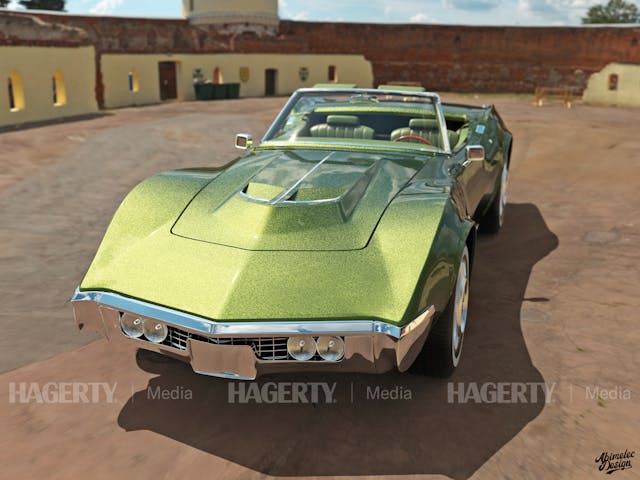
We expect that the Roadster de Ville will be a roaring success. The combination of Corvette handling and Cadillac luxury is so obvious that it would take a significantly more incompetent variant of General Motors to snatch defeat from the jaws of victory. It helps, of course, that the reputation of the Cadillac engine exceeds that of its Chevrolet counterpart, as should always be the case. With a well-equipped base price of $7082, the Roadster de Ville will surely be a common sight at country clubs near you.
